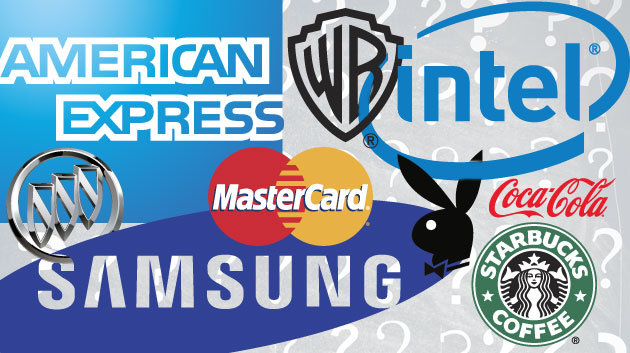Why brands aren’t becoming publishers
Jack Krawczyk
If you have been reading tech press, ad trades, or stepped foot into a digital agency over the past year, you have heard a common theme: Brands are becoming publishers. The belief is that the spread of social media eliminates the need for a traditional publishing middleman, since the brand now owns its distribution through platforms like Facebook and Twitter.
In theory, since Coca-Cola has more Facebook fans than the primetime audience for “American Idol” four times over, it should get more value from its own audience. The challenge with this belief is that inherently assumes that brands know how to create content that people actually want to consume.
There are brands that are completely dedicated to creating that type of content: NBC, Viacom, ABC/Disney…These brands have the formula for what it takes to make “hit” content, and even they can’t get it right over half the time.
These content creation brands diversify their portfolio of content to hedge risk against duds (The Playboy Club, anyone?); brands like Starbucks, Coke, etc don’t have the same type of risk luxury. This is the reason why brands won’t become publishers: Either they already are, or they’re waiting on the right solution.
Creating good content requires risk and commitment
When a brand is tasked with aligning itself with certain intangibles (adrenaline: Red Bull, happiness: Coke, athleticism: Nike, and so on), it’s difficult to imagine investing countless months into a content program only to find it flop. Companies like Warner Brothers make several programs each TV season in order to spread risk against flops (not to mention how many content ideas that don’t receive the green light).
Over time, content producers develop a mastery of what makes good content and what does not. They also develop an affinity for their content that takes on a brand of its own. This requires a commitment that many brand marketing teams aren’t prepared to take. When the commitment is there, however, your brand can reap the rewards.
Have you read Travel+Leisure lately? Have you noticed there are a lot of articles promoting American Express? Did you know American Express actually publishes the magazine (and Food & Wine, and some others)?
American Express has dedicated a subsidiary company, American Express Publishing, to focus on this content creation alone. This is what commitment to being a publisher looks like.
Procter & Gamble does the same level of dedication, just check out some its productions: The People’s Choice Awards, DinnerTool, and the Walmart co-branded Family Movie Night. That undertaking yields high brand exposure, but requires a large time and monetary investment. Most brands aren’t ready to take this sort of leap, which leaves the brands-as-publishers movement splintering into two camps: Outsourced content management or guest publishing on proven content brands.
Camp one: Outsourced content management
Brands don’t have the stomach for a series of trial and error in the content game to better understand how to produce their branded delivery. Companies like Federated Media and more algorithmically-based Percolate are centralizing content production and sourcing it out to partner brands.
Brands like Intel, Buick, Samsung, and MasterCard have used these services to create legitimate content experiences, with the risk hedged by hiring a secondary firm with expertise. This same type of sentiment drove the high valuations for Buddy Media and Vitrue: Understanding how consumers engage with content and building from that expertise.
This solution works best for brands that are sure that they want to develop a content program. It also requires patience, which is not always a marketer’s top virtue. For those marketers, the second camp is a better fit.
Camp two: Guest publishing on proven content brands
The emergence of content consumption platforms like YouTube, Funny or Die, and Buzzfeed are taking the attention of consumers across the internet. Viewers turn to these content experiences for a quick laugh, to catch up with fun gossip, or just to watch dogs on skateboards. These platforms have already built and understand their audience, and they will help a brand create a custom content experience.
Funny or Die has been creating sponsored videos, such as the Zach Galafianakis hit “Between Two Ferns” (brought to you by Speed Stick). Buzzfeed can connect you with Mike’s Hard Lemonade’s tips on how to creatively have a drink in the warmer months.
YouTube is a bit different, but working with partners like Maker Studios to help build content that consumers will natively integrate into their content consumption experience.
These forms of content publishing have a considerably shorter shelf life than creating a trusted brand, which leads to a higher cost per engagement, but substantially lowers a brand’s time investment risk.
The emerging opportunity
The reason these forms of engagement are growing stem strongly from a reduction in consumers’ desire to engage with “traditional” web ad formats that do not align with a user’s expectations. Opportunities in the field of “brands as publishers” are emerging to provide risk management platforms for content creation.
Companies like Percolate are taking a bet on making this an algorithmic approach, which helps reduce the cost of management. Media buying technologies like Adaptly, Sharethrough, and UNIFIED are driving the ability to grow their distribution through Facebook, Twitter, StumbleUpon, and other platforms.
Ultimately not all content programs are going to work for brands, but banner and other interruptive ads certainly aren’t going to work either. We’re in a current landscape where the brands who are taking the risks today are getting to learn quickly to ultimately reduce their costs in the long run.
Close